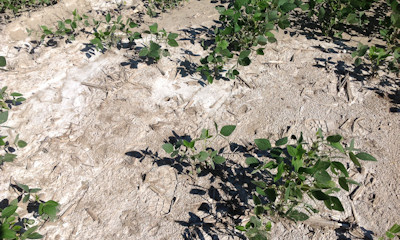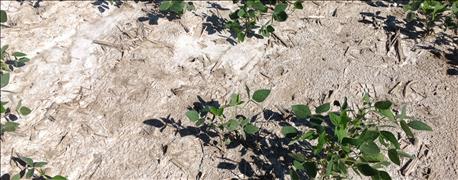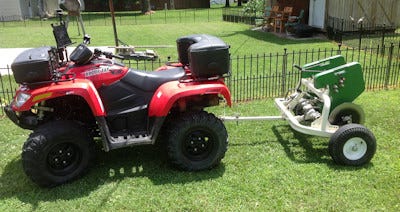
Is sodium to blame for those low-producing areas in your field? According to Terry Wyciskalla, independent agronomist and CCA, there are approximately 946,000 acres of sodic soils, or soils with a high levels of sodium, in south-central Illinois. Wyciskalla gives a brief chemistry lesson to explain the impact of sodic soils on crops:

SODIC SOILS: Wyciskalla says more than 600 thousand acres in southern Illinois have high sodium levels. Counties impacted, but not limited to, include: Bond, Fayette, Madison, Marion, Monroe, Perry, Randolph, St. Clair and Washington.
“Think of the positive side of a battery; sodium has a plus charge. Water is a polar molecule; it has a plus side and a minus side. The plus charge of the sodium pulls on the negative side of water. Opposites attract and the sodium pulls on the water so tightly, the plant can’t take it up,” Wyciskalla explains. “So in saturated soils with extremely high levels of sodium, the pull of sodium is so strong, you have water starved plants.”
Nutrient-starved plants will never reach their full potential.
The good news: synthetic gypsum may help neutralize sodic soils. Wyciskalla explains synthetic gypsum is a by-product from coal-fired power generators, such as the Washington County generator near Lively Grove, which produces millions of tons of synthetic gypsum each year. Synthetic gypsum is rich in calcium and sulfur, which acts as an equalizer in the soil. When synthetic gypsum is applied on sodic soils by a limestone spreader truck, with a wide belt or chain, sodium particles combine with the sulfate and can be flushed out through tile drainage. Wyciskalla notes good drainage is key to successful treatment.

TRACKING SODIUM: Wyciskalla creates a detailed soil map by pulling a Veris Quad 1000 soil conductivity sensor behind his 4-wheeler. The conductivity sensor maps high-sodium areas of the field.
After three years of working with synthetic gypsum on sodic soils, Wyciskalla says farmers are starting to see the benefits. “Like anything else, it takes time for the soil chemistry to come around and balance back out,” Wyciskalla says. “In some fields, we could see a difference a few weeks later. Other fields it takes longer; it’s highly variable.”
How do farmers identify sodic soils? Wyciskalla creates a detailed soil map by pulling a Veris Quad 1000 soil conductivity sensor behind his 4-wheeler. The conductivity sensor picks up areas of the field high in sodium, as well as clay soils. Wyciskalla soils tests the areas in question to confirm sodium spots.
To treat sodic soils, Wyciskalla recommends 1,000 to 2,000 pounds of synthetic gypsum per acre every four to six years. Wyciskalla notes a variable rate prescription is possible based on the conductivity soil maps.
About the Author(s)
You May Also Like




